My love of wetland habitats goes back to my childhood, when my Dad used to take me birdwatching along the south bank of the Humber Estuary in northern England. The places we used to visit contained pools and reed beds and salt marsh and mudflats, all teeming with wildlife despite the close proximity to ports and factories.
When I got older and met Matt, my partner, we became obsessed with walking in mountains, and spent our time exploring Scotland, the Pyrenees, the Alps, and any other mountainous locations we could get to. But I never lost my love of being surrounded by reeds and hearing the evocative sounds of wetland birds.
These days my knees and feet are not up to serious mountain walking, and wetland habitats have once again become my preferred environment.
I now live not far from York, which is north of the Humber Estuary. Matt and I still visit both sides of the estuary regularly, but we have also discovered lots of wonderful wetland nature reserves within easy reach of our home.
I love visiting nature reserves. We can walk from hide to hide at our own slow pace, having regular breaks to stop and observe the wildlife, plants and landscapes of these special places.
And I love the sounds. Reeds swishing, curlews calling, water trickling, leaves rustling, warblers warbling. These sounds I find calming and therapeutic - so different to constant traffic noise and loud people!
When I first moved to North Yorkshire I never expected to see egrets and spoonbills so close to my home, or to hear bitterns booming in spring, or to regularly watch marsh harriers patrolling the reed beds hunting for prey. I feel very lucky to have easy access to so many great reserves, and hugely grateful to the organizations and volunteers who manage and protect them.
Here I would like to share a quick introduction to some of the places Matt and I love and regularly visit. Not just to watch birds, but because we find the ponds, reed beds, landscapes, sounds and big skies so peaceful and relaxing.
I will write about each of these places (and many others) in more detail in separate posts, and regularly report on interesting visits, sightings and observations.
If you find yourself in the York area, and enjoy being out in nature, be sure to check out some of these wonderful places (I have included links for further information).
Blacktoft Sands
Blacktoft Sands is situated in East Yorkshire south of the River Ouse, just before it joins the River Trent and becomes the Humber Estuary. The reserve is managed by the RSPB.
Blacktoft Sands has vast reed beds with pools and lagoons which are inundated by high tides in the spring and autumn. It is a great place to see wildfowl and wading birds, particularly during migration seasons, and the best place I know to reliably watch marsh harriers.
There is also scrub habitat and hawthorn hedges which provide berries for visiting winter thrushes.
The reserve has six hides, a car park, toilets and a small visitor centre with some refreshments.
Eastrington Ponds
Eastrington Ponds is a Local Nature Reserve close to Howden in East Yorkshire.
The reserve consists of a large pond, a section of disused railway line and a series of smaller ponds in old pits. It is a peaceful place, great for spotting wild flowers, butterflies and dragonflies in summer, and wildfowl on the various ponds.
There is a car park, two bird hides and numerous benches along the trails.
Fairburn Ings
Fairburn Ings is a large reserve in the Aire Valley near Castleford in West Yorkshire, managed by the RSPB.
This reserve is on the site of a former coal face. It now consists of various ponds, reed beds, wet grassland and woodland beside the River Aire. I have seen 3 species of egrets here (on the same day), spoonbills, kingfishers and lots of wildfowl, raptors and woodland birds. Deer and foxes are regular visitors, and there are many wild flowers in the spring and summer.
The reserve has a main car park and a second lay-by parking area, a good visitor centre with a shop and cafe, toilets, excellent paths, activities for families, and several hides and benches.
North Cave Wetlands
If I had to choose my favourite reserve, it would be North Cave Wetlands. This wonderful reserve in East Yorkshire is still expanding, as the site of a sand and gravel quarry is gradually transformed into a variety of lakes, islands and reed beds .
North Cave Wetlands has important populations of breeding avocets, black-headed gulls and sand martins, and is fantastic for watching a large variety of wildfowl and waders.
Bird feeders attract lots of small birds in the winter, as do berries in the hedgerows. It is also a great site for insects, and it is a pleasure watching the dragonflies in summer (and the hobbies that feed on them).
North Cave Wetlands is managed by the Yorkshire Wildlife Trust. It has plenty of parking, a mobile refreshment bus open most days, composting toilets, and excellent hides, benches and paths.
Potteric Carr
Potteric Carr is a large Yorkshire Wildlife Trust reserve near Doncaster that is surrounded by busy roads and criss-crossed with railway lines. There is constant traffic noise here, and yet nature thrives.
The reserve is a remnant of a vast fenland, and has a variety of ponds, reed beds, flower meadows and woodland.
Potteric Carr is a great place to see (and hear) bitterns, as well as egrets, herons, and all manner of wildfowl and waders. Marsh harriers are usually seen hunting above the reeds, as well as buzzards and kestrels. I often see deer on the reserve, and have seen foxes and hares. And it is excellent for spotting fungi in autumn.
The reserve has a car park, visitor centre with an excellent cafe, toilets, a great network of paths and numerous good hides. You can easily spend a whole day here wandering from hide to hide.
You can read my longer post on Potteric Carr here.
Ripon City Wetlands
Ripon City Wetlands is located in the site of an old quarry beside Ripon Racecourse. It lies between the Ripon Canal and the River Ure, and is managed by the Yorkshire Wildlife Trust.
The reserve is a great place to watch wildfowl, waders, sand martins and birds of prey, as well as damselflies, dragonflies and butterflies in the summer. Otters are sometimes seen, along with foxes and hares.
The reserve is also well known for its starling murmurations.
There is a car park (closed on race days), a trail, a viewing screen and hide, and it is easy to combine a trip with a stroll along the canal towpath.
Rodley Nature Reserve
Rodley Nature Reserve is situated in the Aire Valley, about 4 miles west of Leeds, on the site of a decommissioned water treatment plant.
It consists of ponds, reed beds, wet grassland, meadows and woodland, and is a haven for wildlife and visitors alike.
The reserve has a car park, visitor centre with light refreshments, picnic areas, excellent paths and bird hides.
It is only open on certain days of the week - you can check opening times here.
St Aidan’s Nature Park
RSPB St Aidan’s is a fantastic large wetland reserve on the site of a former open cast coal mine. It is located in the Aire Valley between Castleford and Garforth, West Yorkshire.
This is the best place to hear bitterns booming in spring - several pairs breed on the reserve.
There is always something interesting to see here, whatever the season. Black-necked grebes and short-eared owls are often present, and I have seen bearded tits, a great northern diver and a glossy ibis. Raptors frequently patrol the skies above, and groups of geese are constantly flying between the ponds and surrounding fields.
The large reserve has a car park, cafe, toilets, a network of good paths, several benches, but no hides. Note that it is very exposed in windy or wet weather.
Staveley Nature Reserve
Staveley is a Yorkshire Wildlife Trust reserve close to Boroughbridge in North Yorkshire. It consists of several large lakes with extensive reed beds, a hay meadow and woodland.
Staveley has large populations of lapwings and geese along with other wildfowl. Otters have often been reported, though I have not been lucky enough to see one. I have regularly seen water rails, and sometimes a barn owl hunting during the day.
The reserve has a small car park (no toilets), a good network of paths (sometimes muddy) and several hides.
Tophill Low
Tophill Low is an active water treatment plant and nature reserve managed by Yorkshire Water. It is situated between Driffield and Beverley in East Yorkshire.
This fantastic reserve consists of two large reservoirs surrounded by ponds, marsh, reeds and woodland. I nearly always see marsh harriers when I visit, and frequently see kingfishers, egrets, curlews and lots of wildfowl. In winter there are huge numbers of geese and ducks on the reservoirs - an impressive sight when they take to the sky. I have seen lovely white male smew here on more than one occasion.
Tophill Low is also a great place to see orchids in summer.
There is a car park with toilets, a small information centre, excellent paths and numerous hides. It is easy to spend a full day here.
Wheldrake Ings
Wheldrake Ings is a Yorkshire Wildlife Trust reserve in the Lower Derwent Valley. It consists of large meadows beside the River Derwent which annually flood in winter.
Once flooded the meadows attract huge numbers of migrant and wintering wildfowl, together with raptors which prey on them. With the skies full of geese and lapwings, the flooded meadows covered in ducks and swans, cormorants on fence posts and herons hunting around the field edges it can be a truly impressive sight.
It also feels remote, and is one of the few reserves where it is possible to find complete solitude. With water on all sides you feel a world away from the busy roads and city nearby.
There is a small car park at the entrance to the reserve, and a larger one at Bank Island nearby with an access path. The reserve has a linear trail and three good hides.
It is important to note that the car park and trails themselves often flood. Sometimes it is possible to wade through safely in wellies, but other times the whole reserve is inaccessible during prolonged flooding. It is always best to check access before traveling any distance.
You can read my longer post on Wheldrake Ings here.
This post is free for everyone to read. If you enjoy my posts and would like to support my writing and photography please consider a free or paid subscription.
If you don’t want to commit to a paid subscription but would still like to support my work you could Buy Me A Coffee.
You can see more of my photos in my Picfair Gallery, where you can purchase downloads and prints in various formats.

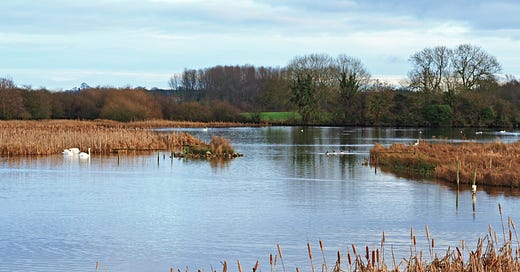



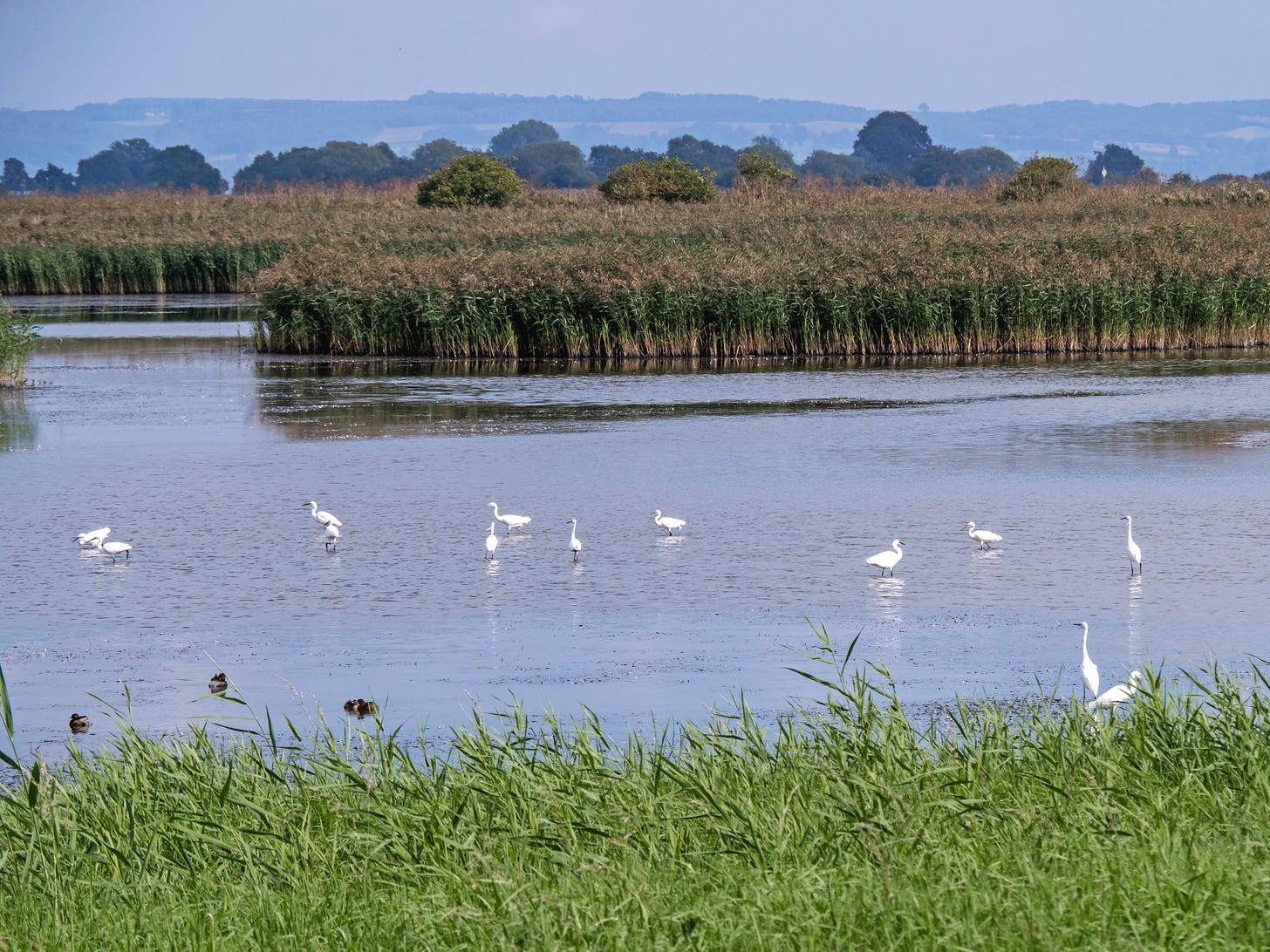


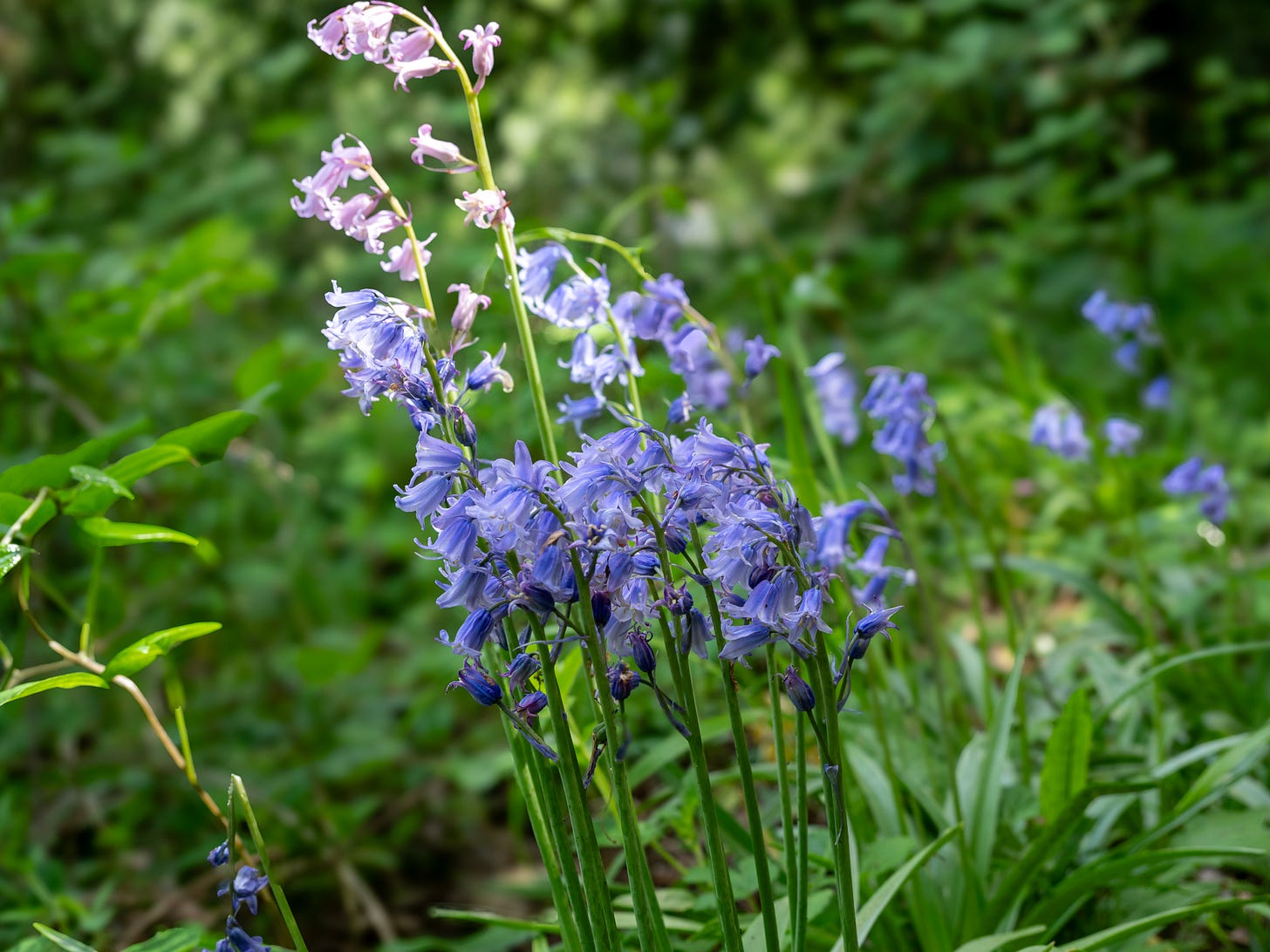

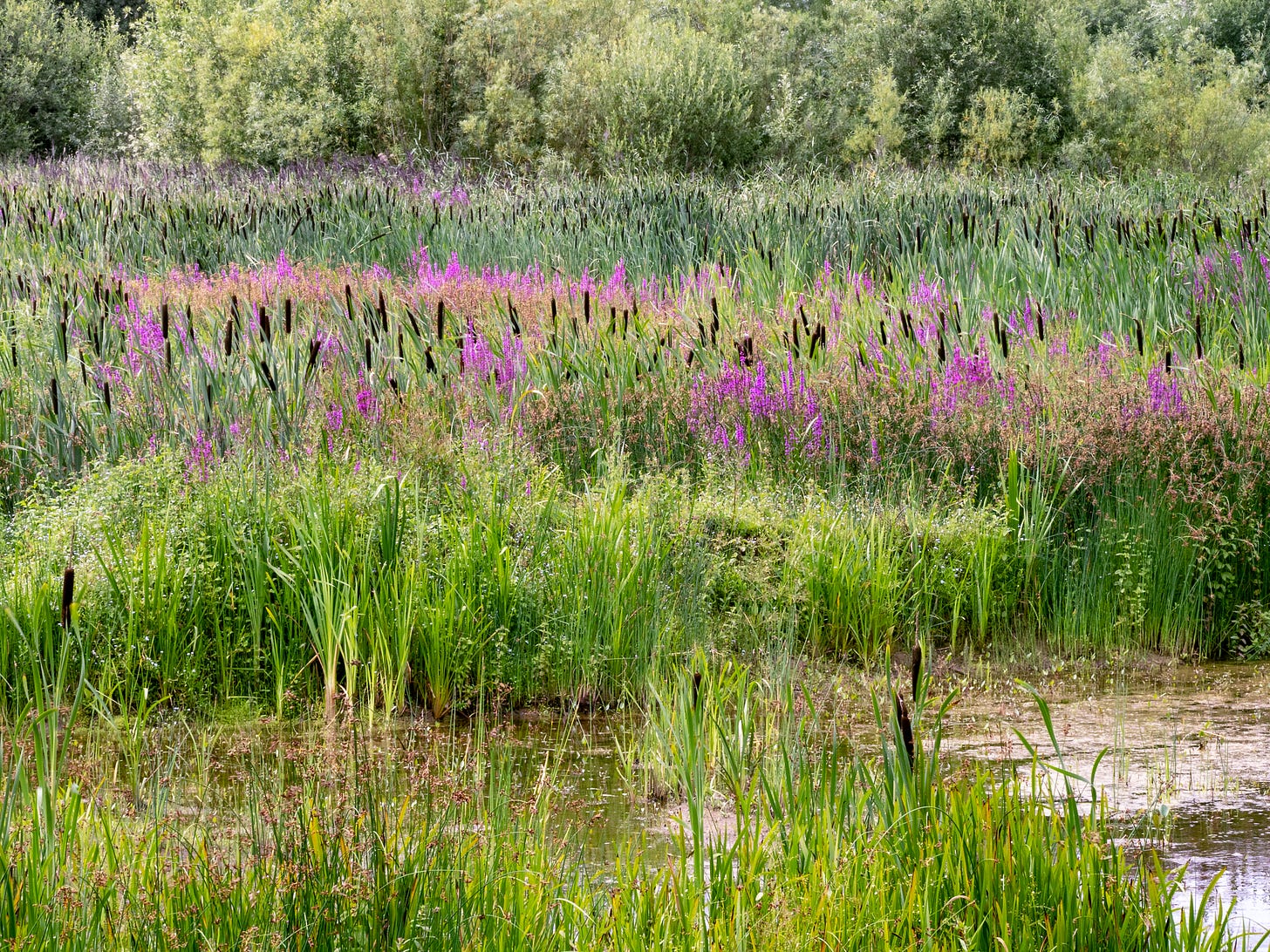
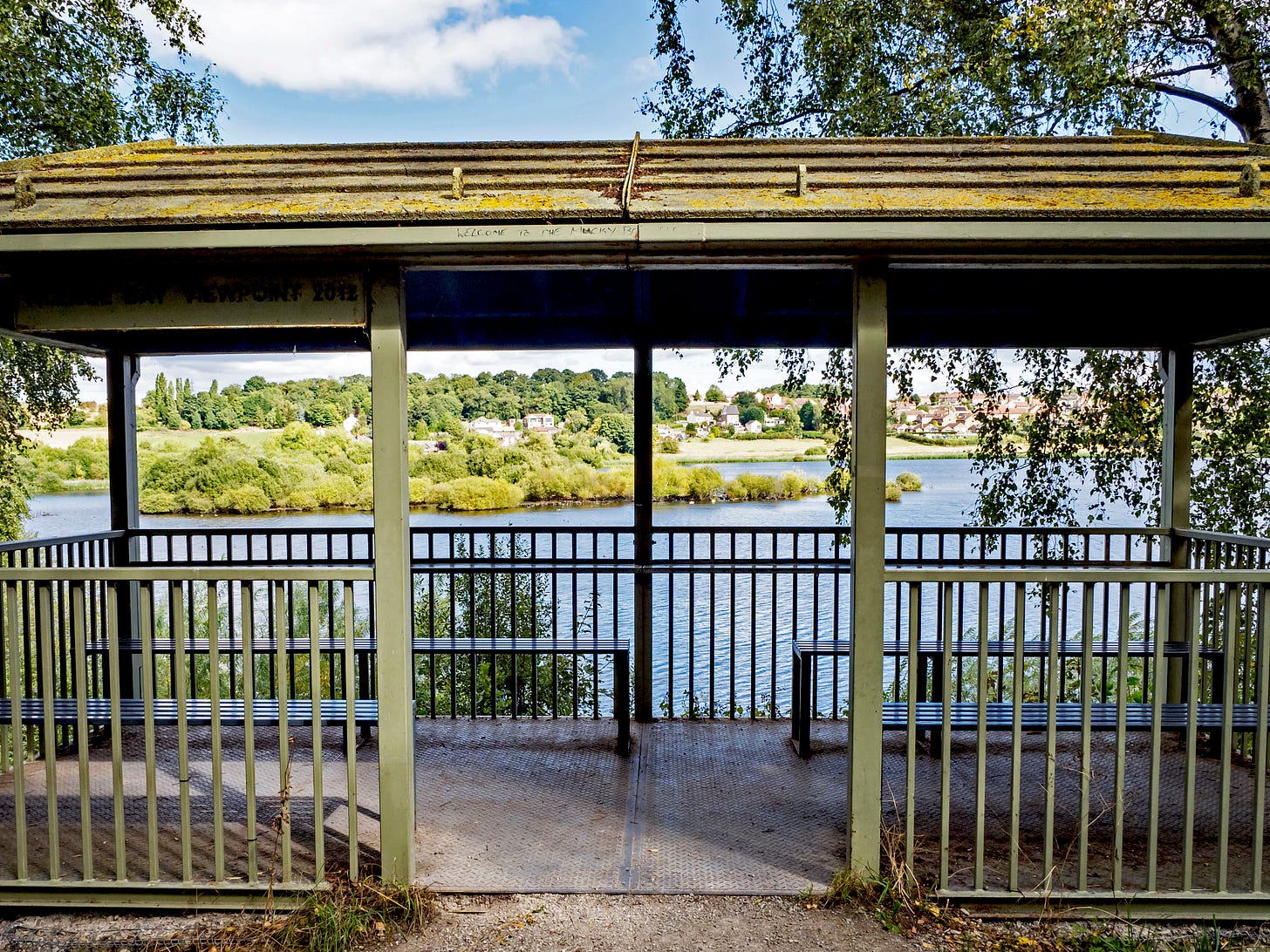
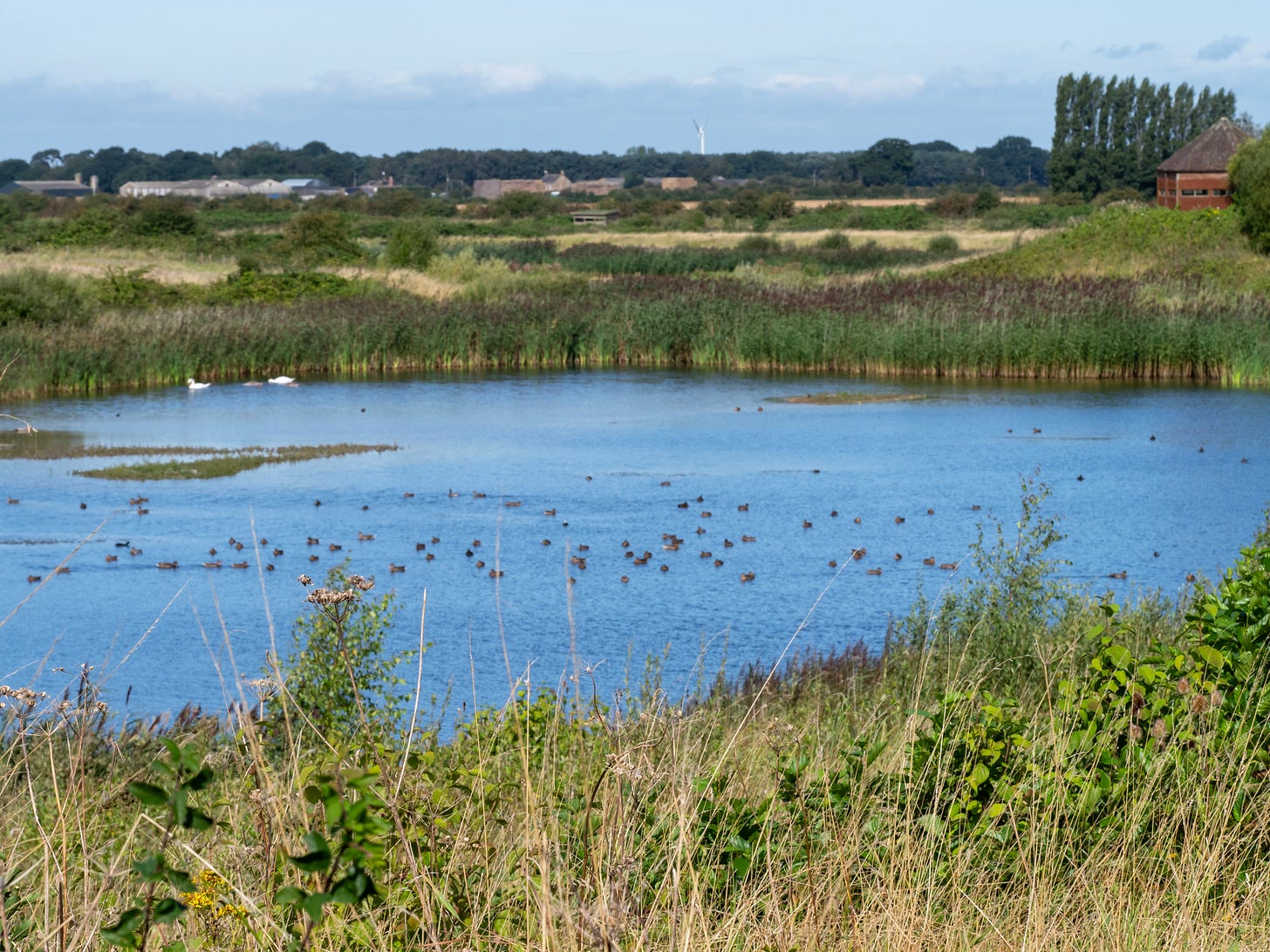
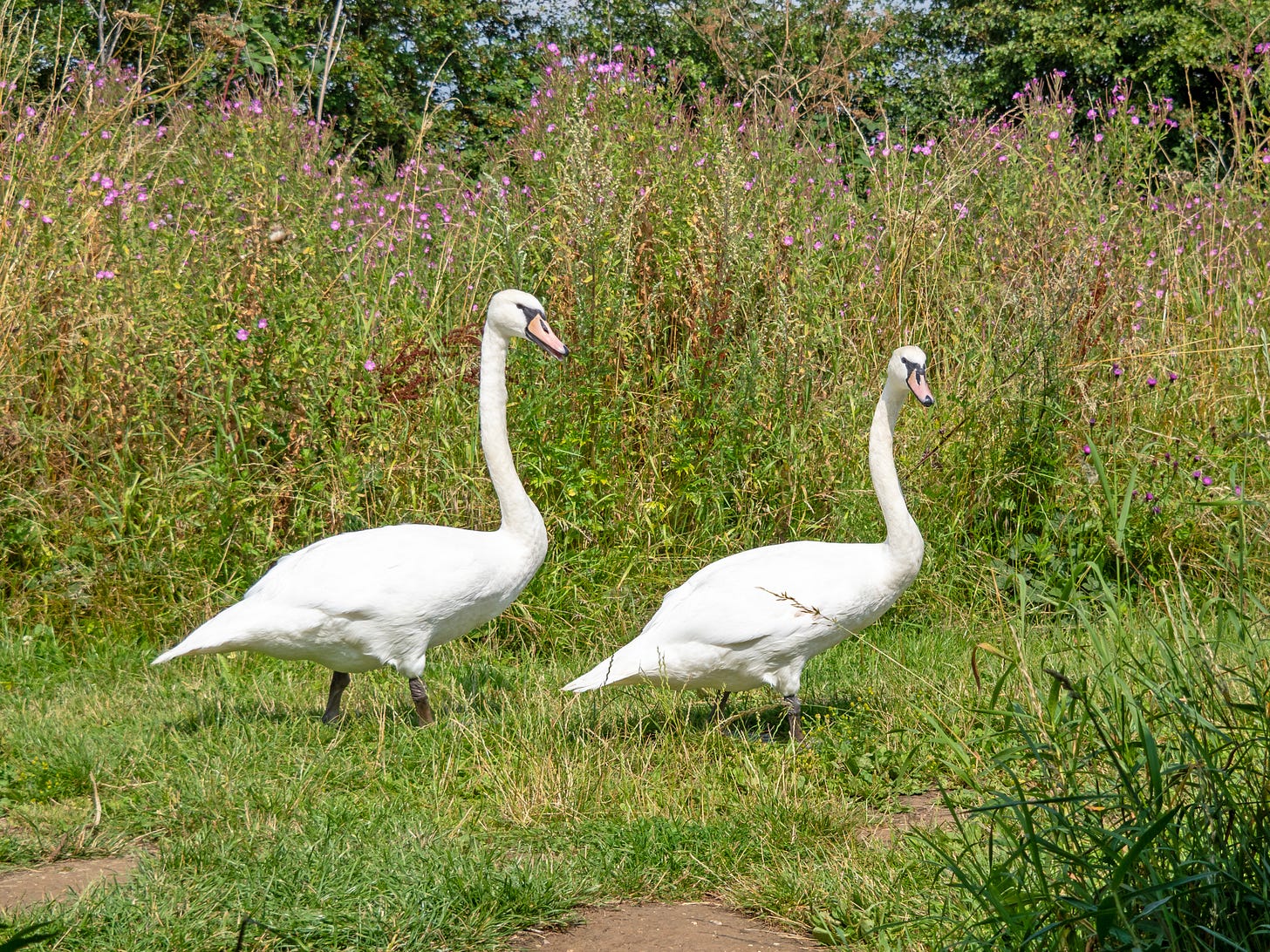

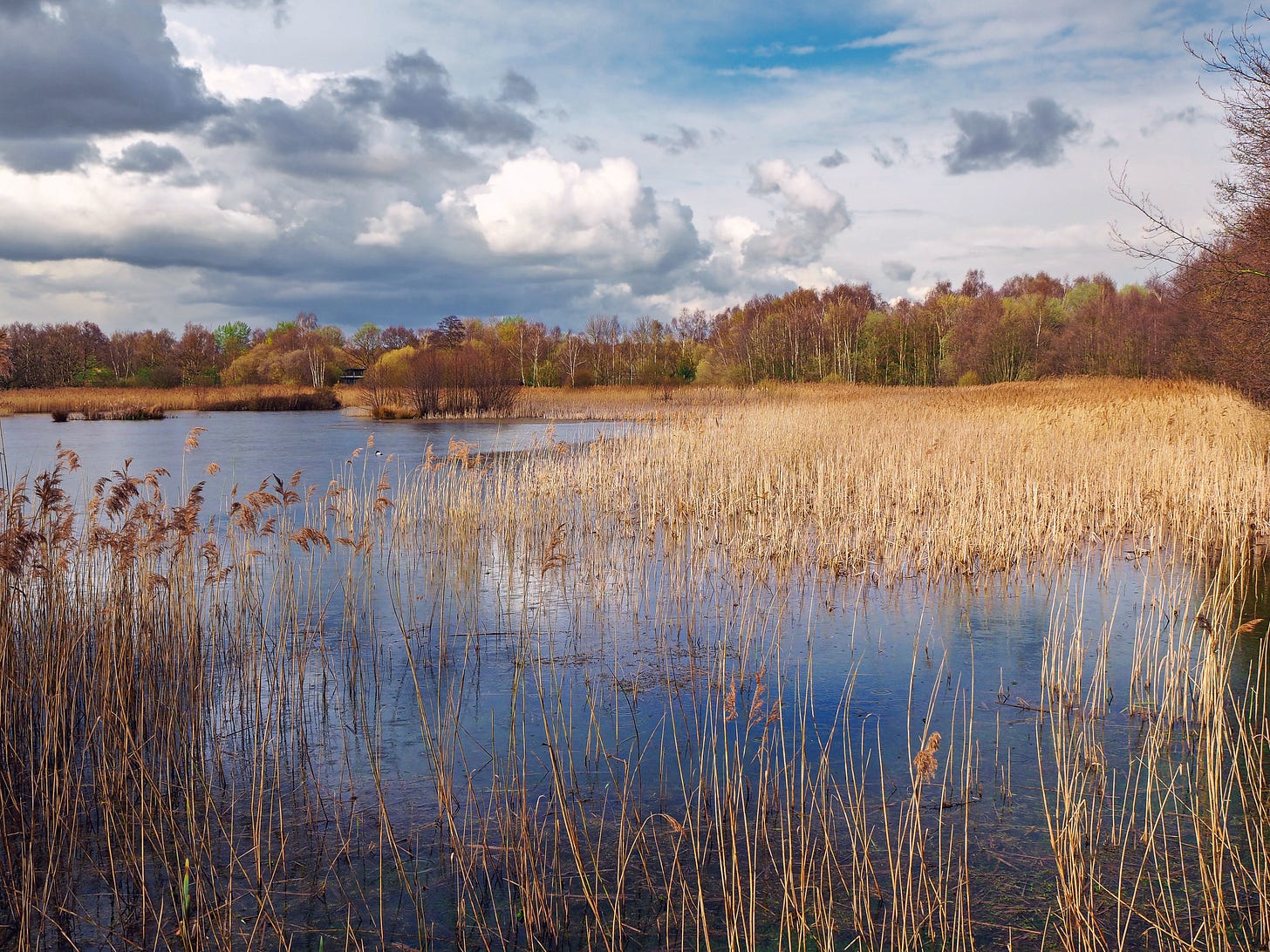

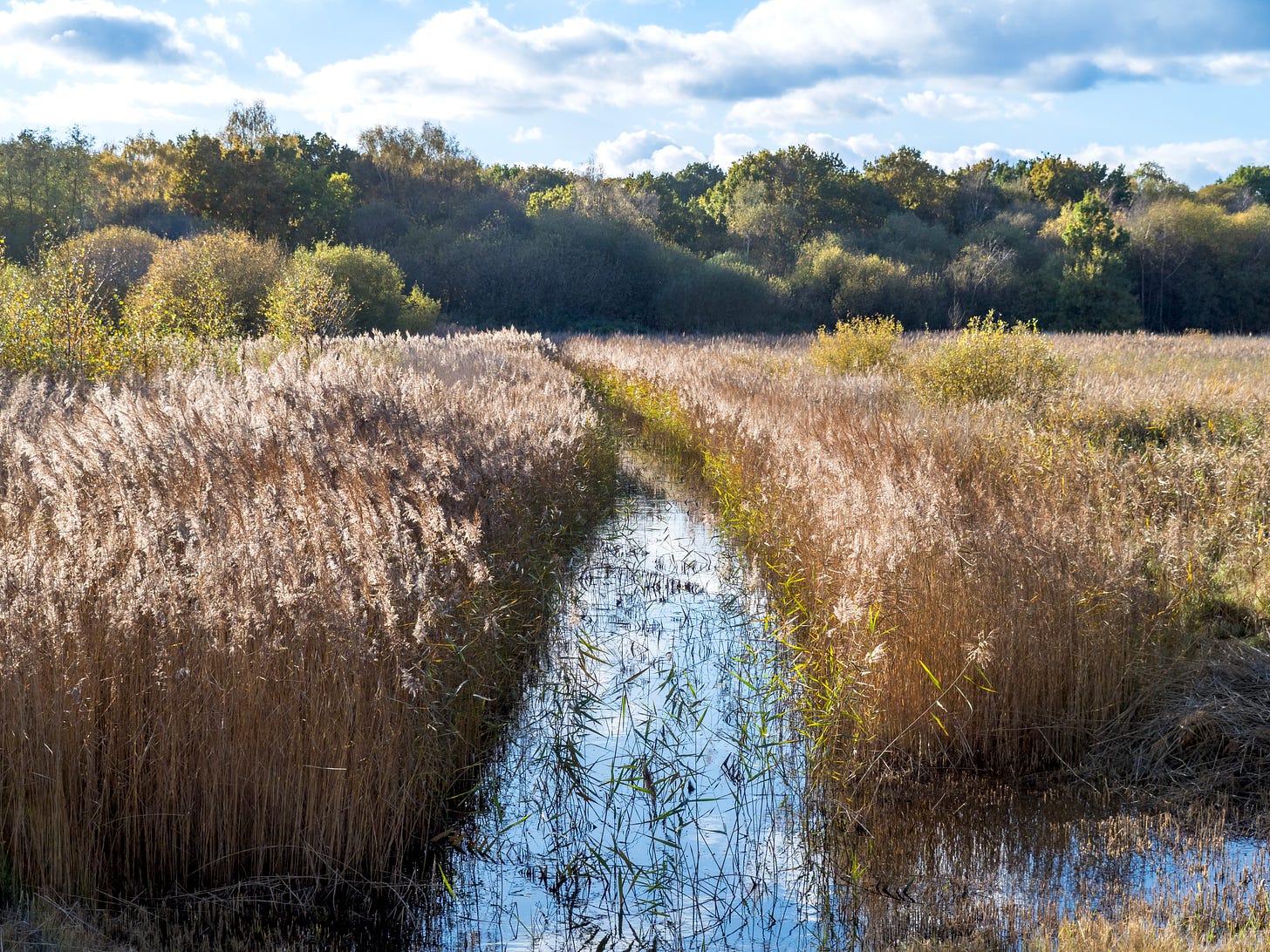
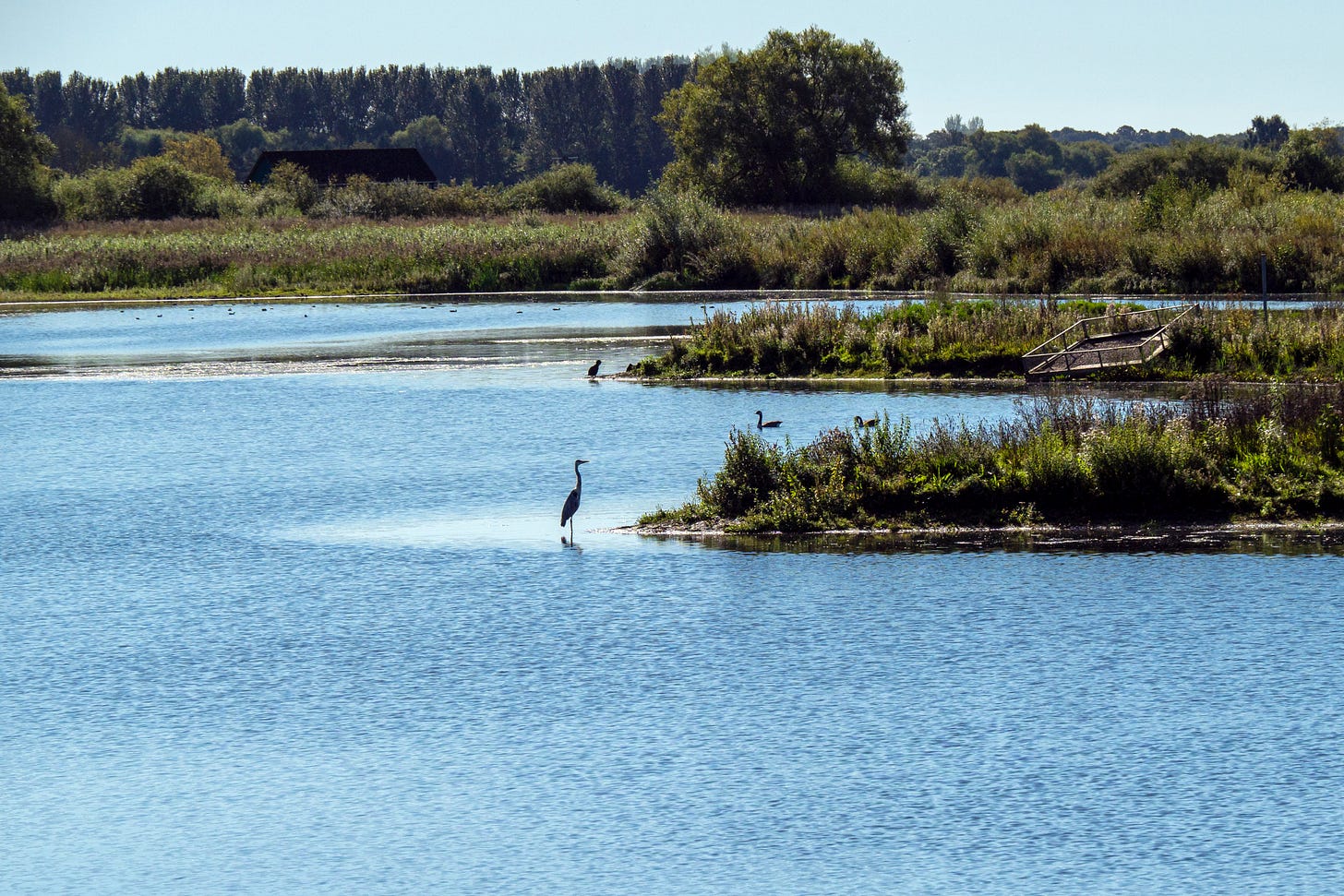


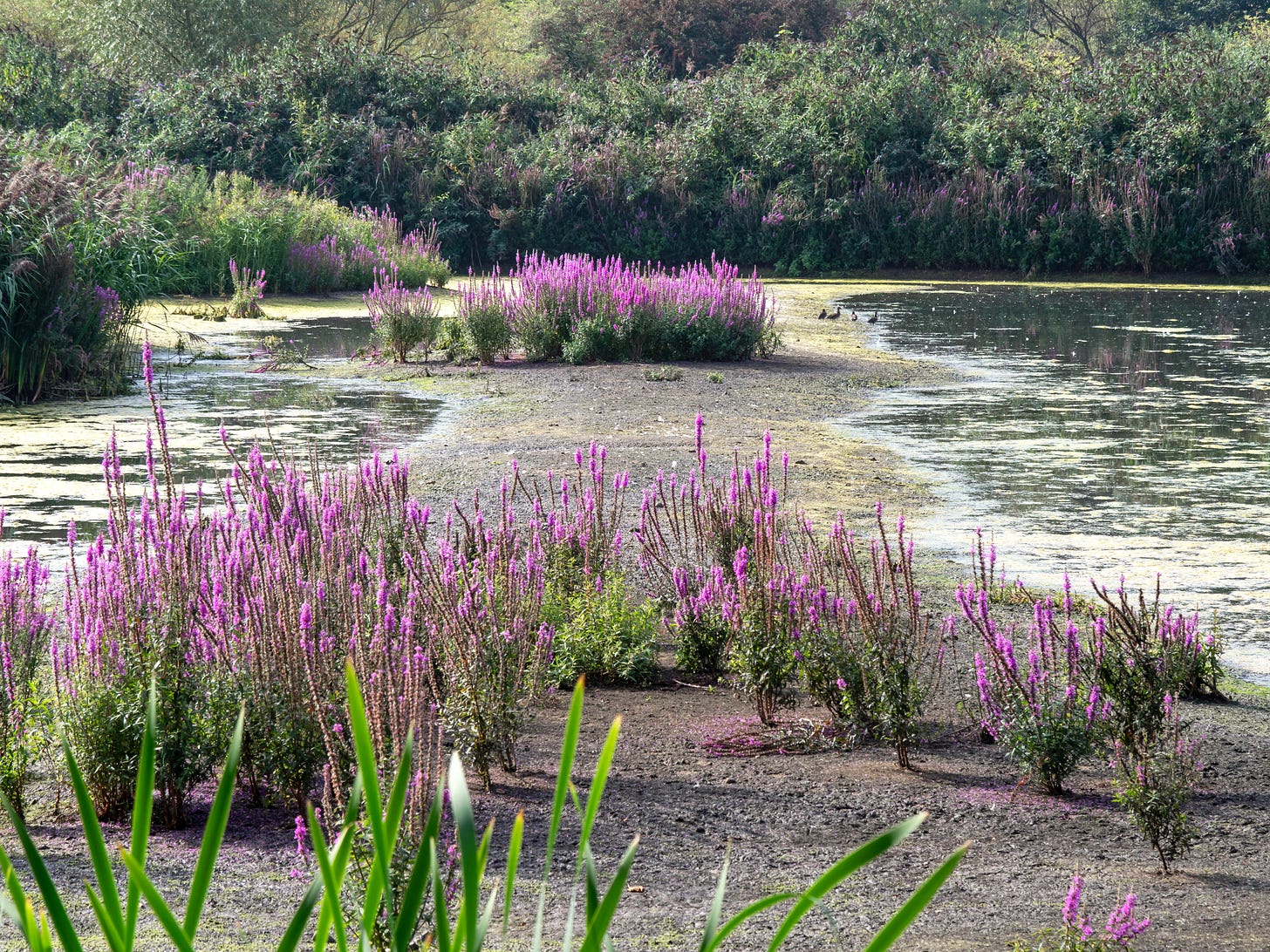


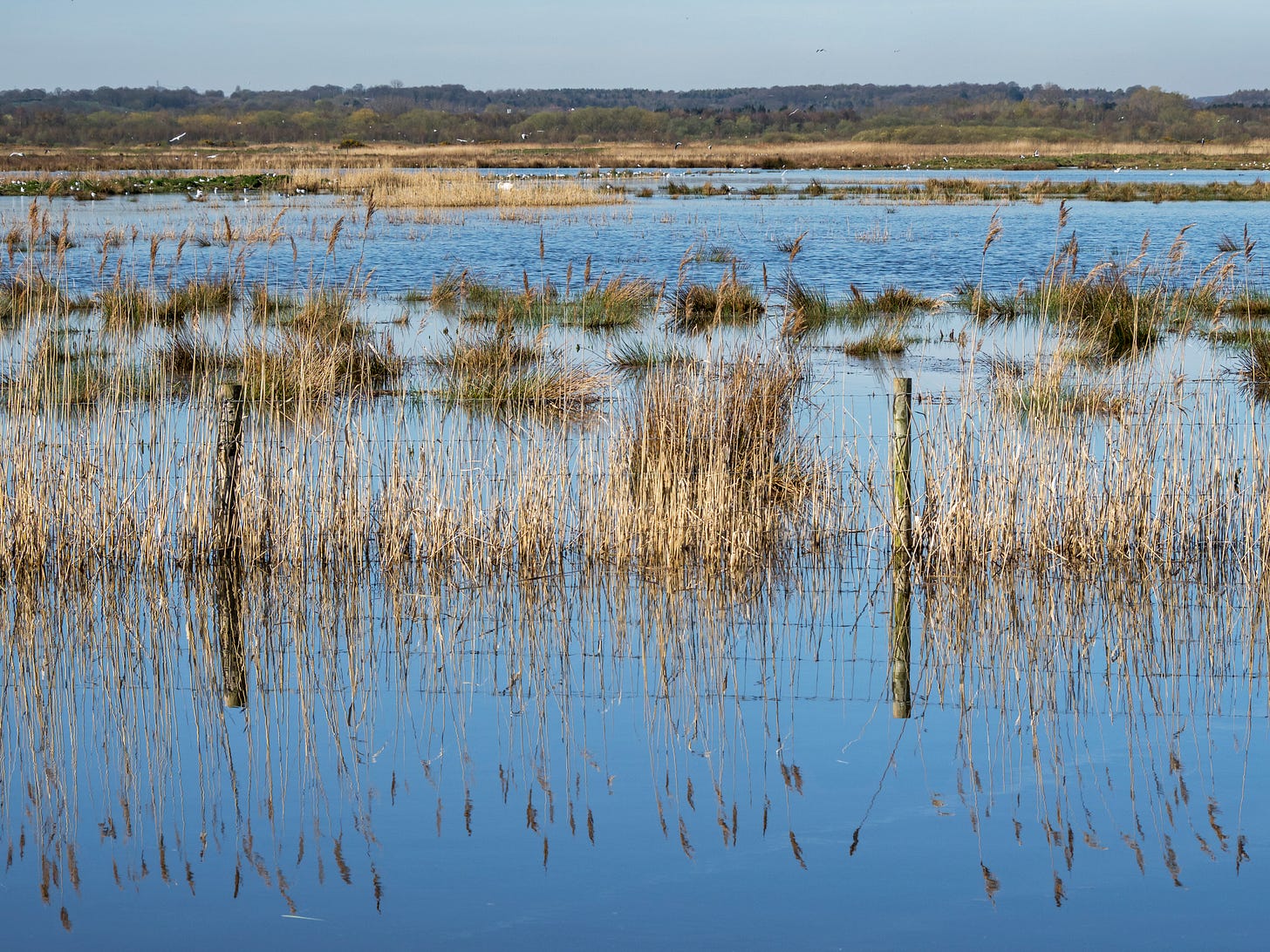
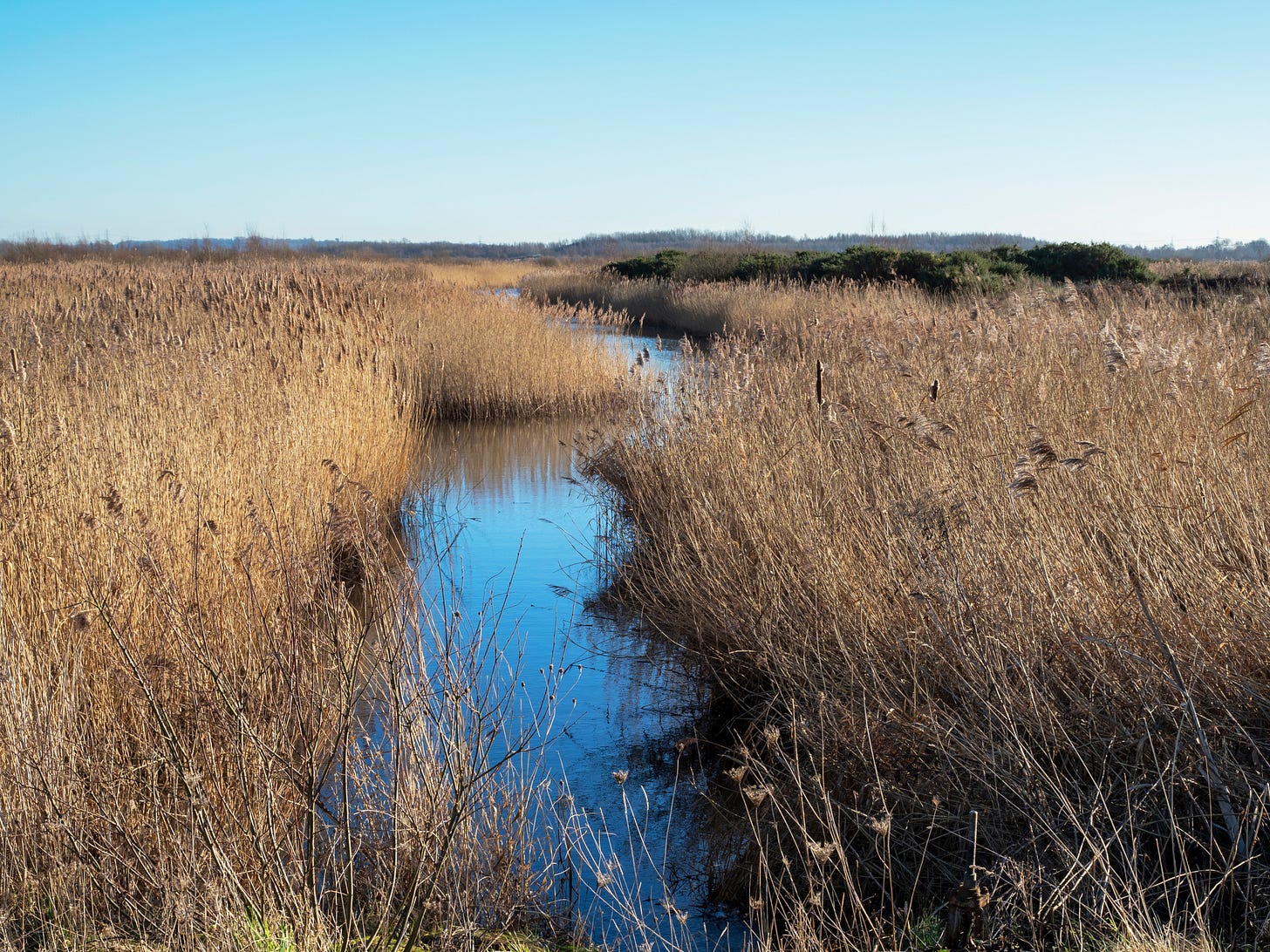










Having grown up in the Netherlands, I’ve always had a love for wetlands, just like you. Potteric Carr looks like a really beautiful place to visit, definitely my favorite from the ones in this post. I added it to my list if I ever make it to the UK again. Thank you!
Wow what a great selection of places you have access to!
As I went to our local nature reserve the other day I thought about how lucky that they exist. A safe haven for the birds.
Great photos 🙂